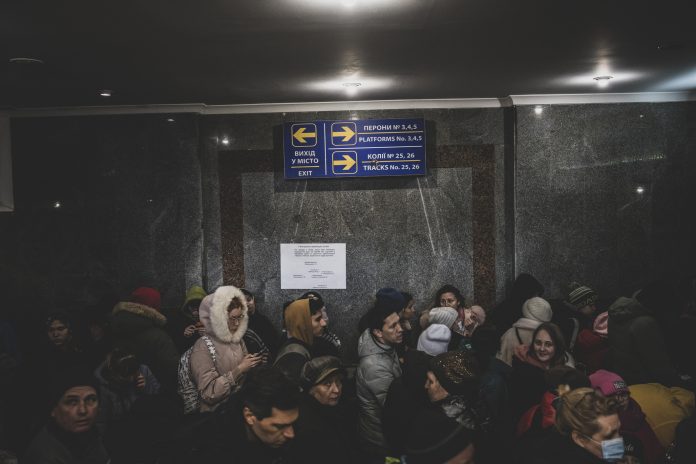What happened to the displaced and vulnerable populations who remained inside Ukraine after the invasion? Researchers look to social media to track displacement in Ukraine
While humanitarian response organisations know the number of refugees who left the country following the invasion, a new study by Oxford’s Leverhulme Centre for Demographic Science gathered data on the internal displacement in Ukraine – as little has been known about the movements of the 38 million people who remained.
Data from the United Nations High Commissioner for Refugees showed that nearly 6 million people in Ukraine crossed the border to neighbouring countries such as Poland and Germany in 2022. Using this data on people crossing the Ukrainian border, in combination with data on active Facebook users, researchers were able to find accurate data on internal displacement in Ukraine across provinces.
Real-time data mapping population displacements are invaluable for targeted humanitarian response
Real-time data mapping population displacements are invaluable for targeted humanitarian response, the researchers note.
Using data to monitor population displacement across Ukraine provinces
The study leveraged social media data from Facebook’s advertising platform in combination with pre-conflict population data to build a real-time monitoring system to estimate subnational population sizes every day disaggregated by age and sex.
Considering factors like population increases in western Ukraine and large displacements – particularly among women and children – away from conflict areas such as Kyiv before and during the Ukraine Crisis, results revealed four distinct displacement patterns:
- Large-scale evacuations
- Refugee staging areas
- Internal areas of refuge
- Irregular dynamics
Researchers estimated that roughly 5.3 million people were internally displaced away from their home province between 25 February and 14 March 2022. The metric also considered the percentage of people who were active on Facebook before the invasion, to mitigate any bias.
To ensure their findings on displacement in Ukraine were correct, they compared data with the International Organization for Migration, which estimated a similar internal population displacement level of 6 million people.
5.3 million people were internally displaced away from their home
Lead author Dr Douglas Leasure from Oxford’s Leverhulme Centre for Demographic Science said: “Forced displacement of populations due to conflict is inherently difficult to measure as this often relies on traditional field survey methods which are difficult in conflict areas, with results becoming quickly outdated.
“By using social media and targeted advertising data, we were able to very quickly collect information on daily active users on Facebook in Ukraine provinces and break them down into five-year age groups and sex.
“After reaching out to humanitarian groups who were ramping up their response to support displaced populations in Ukraine, it became really clear to us that our daily population estimates could help the United Nations and others to assess humanitarian needs and develop a targeted response strategy.”
“Our daily population estimates could help the United Nations and others to assess humanitarian needs”
Professor Melinda Mills, senior author of the study and Director of the Leverhulme Centre for Demographic Science, concludes: “I am very proud of my team and our collaborators who rapidly responded to the need for information on internal displacement in Ukraine to assist with the humanitarian response.
“This metric is one of the only quantitative estimates of internal displacement in virtual real-time, which we are continuing to develop to help those in need during humanitarian crises.”











